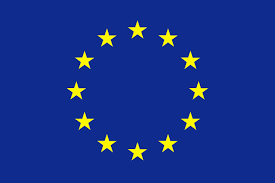The Western Balkans stand at a pivotal juncture in their pursuit of European Union (EU) integration. While the promise of EU membership has long symbolized stability and economic prosperity, recent developments suggest a complex and evolving landscape.

EU Engagement and Investment
In November 2023, the European Commission adopted the Growth Plan for the Western Balkans, aiming to integrate these partners into the EU’s single market, advance regional economic cooperation, and deepen EU-related reforms. This initiative includes a €6 billion Reform and Growth Facility for the period 2024-2027, designed to accelerate the socio-economic convergence of the Western Balkans with the EU.
This substantial investment underscores the EU’s commitment to strengthening ties with the region. However, the path to full integration remains fraught with challenges, including the necessity for unanimous approval from existing EU member states—a process susceptible to delays due to differing national interests.
Geopolitical Dynamics
The Western Balkans occupy a strategic position in Europe’s geopolitical framework. The ongoing conflict in Ukraine has heightened the significance of this region as a gateway for energy routes and as a buffer zone for European security. The EU’s efforts to diversify energy supplies and reinforce its southeastern borders have brought the Western Balkans into sharper focus. Notably, Serbia’s recent agreements with the EU on critical raw materials and electric vehicle battery manufacturing illustrate a shift towards deeper economic integration with Europe, despite historical ties with Russia.
Internal Challenges and Regional Cooperation
Despite these advancements, internal challenges persist. Political resistance within certain EU member states, coupled with the Western Balkans’ own struggles with governance reforms, impede progress. The European Commission’s 2021 reports highlighted concerns about the lack of progress in areas such as the rule of law and fundamental rights, echoing reservations about expansion among some influential member states.
Nevertheless, regional cooperation initiatives, such as the Central European Free Trade Agreement (CEFTA), have shown promise. Albanian Prime Minister Edi Rama has expressed optimism about enhancing CEFTA mechanisms to better prepare for EU membership, aiming for readiness by 2030.
The Path Forward
The trajectory towards EU integration for the Western Balkans is complex and multifaceted. While significant investments and strategic importance provide momentum, internal reforms and political will remain crucial. The region’s young, dynamic population presents a unique opportunity for innovation and growth, potentially serving as a catalyst for overcoming existing challenges.
In conclusion, the Western Balkans are at a crossroads where the convergence of EU engagement, geopolitical shifts, and internal dynamics will determine their future within the European landscape. The coming years will be critical in shaping this trajectory, requiring concerted efforts from both the region and the EU to realize the longstanding vision of integration.
